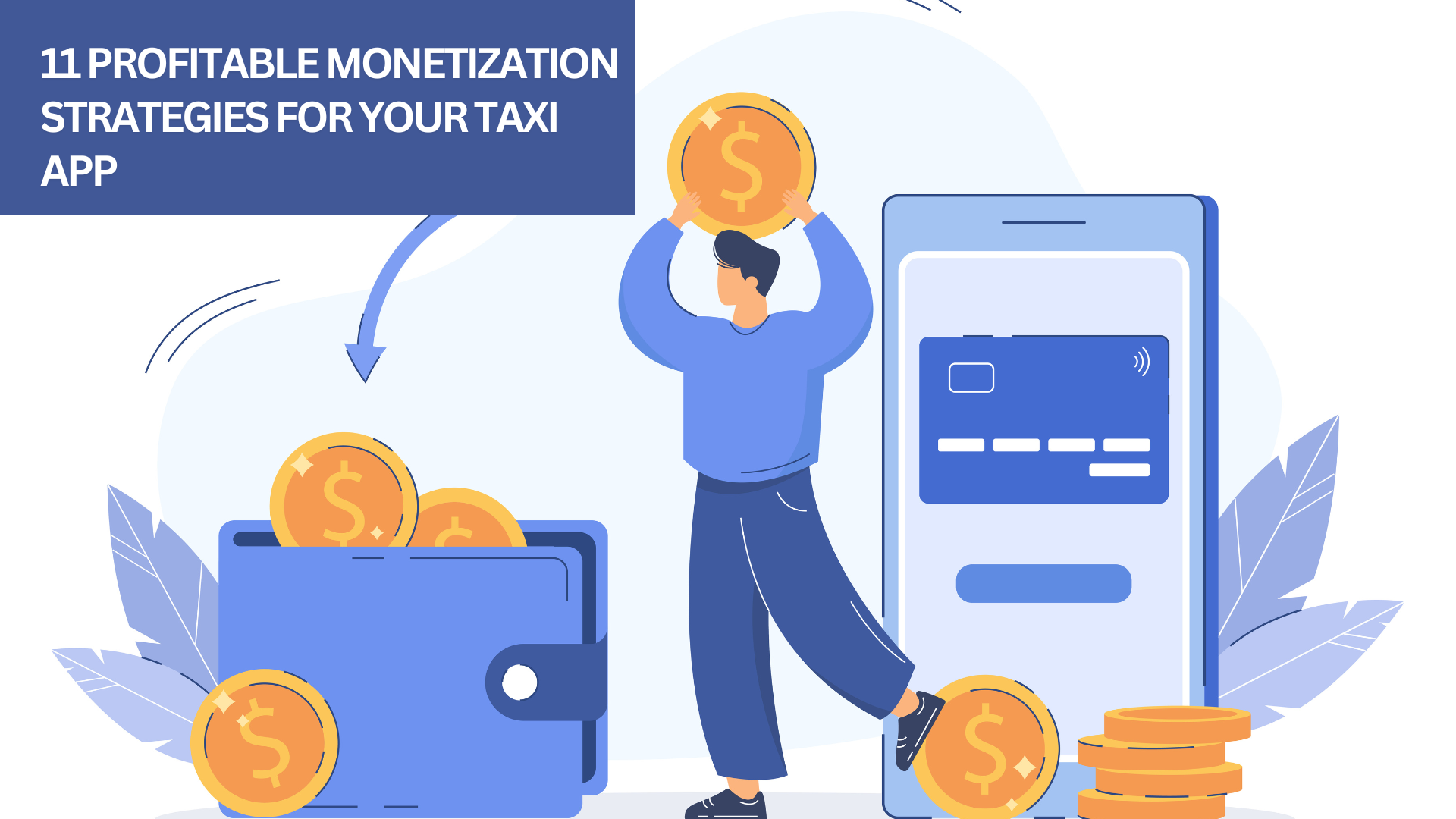The ride-hailing industry has experienced exponential growth over the past decade, with platforms like Uber, Lyft, and Bolt revolutionizing urban transportation. However, simply launching a taxi app isn’t enough—you need a solid monetization strategy to ensure long-term profitability.
Whether you’re a startup or an established player, choosing the right revenue model can make or break your business. In this guide, we’ll explore 11 proven monetization strategies to maximize earnings from your taxi app, from commission-based models to data monetization. Checkout: https://zipprr.com/uber-clone/
1. Commission-Based Model (The Industry Standard)
The most common way taxi apps generate revenue is by taking a percentage-based commission from each ride. Companies like Uber and Lyft typically charge drivers 20-30% per trip, depending on the region and service type.
How It Works:
-
Drivers keep a portion of the fare, while the platform takes a cut.
-
Some apps use a dynamic commission model, adjusting rates based on demand or driver performance.
Pros:
✅ Predictable revenue stream.
✅ Scalable as the user base grows.
Cons:
❌ High commissions can discourage drivers.
❌ Requires a large user base to be profitable.
Pro Tip: Offer lower commission rates for top-performing drivers to improve retention.
2. Surge Pricing (Dynamic Pricing for Peak Demand)
Surge pricing, or dynamic pricing, increases fares during high-demand periods (e.g., rush hour, bad weather, or special events).
How It Works:
-
Algorithms detect demand spikes and adjust prices in real time.
-
Example: Uber’s “2x” or “3x” surge pricing during New Year’s Eve.
Pros:
✅ Maximizes earnings during peak times.
✅ Encourages more drivers to get on the road.
Cons:
❌ Can frustrate users if overused.
❌ May lead to negative PR if not implemented fairly.
Best Practice: Be transparent about surge pricing and notify users before booking.
3. Subscription Plans for Frequent Riders
Subscription models provide recurring revenue while improving customer loyalty.
Popular Examples:
-
Uber Pass ($24.99/month): Discounts on rides and Uber Eats.
-
Lyft Pink ($9.99/month): Priority pickup and waived cancellation fees.
How to Implement:
-
Offer monthly or yearly plans with perks like:
-
Discounted rides
-
Free upgrades
-
Priority booking
-
Pros:
✅ Steady income from loyal users.
✅ Increases user retention.
Cons:
❌ Requires a large customer base to be viable.
4. In-App Advertising (Partner with Brands & Local Businesses)
Displaying ads within your app can be a lucrative revenue stream.
Types of Ads:
-
Banner ads (shown on the booking screen).
-
Video ads (reward users with ride discounts for watching).
-
Sponsored ride promotions (e.g., “Get 10% off at McDonald’s after your ride”).
Pros:
✅ Low effort, high-margin revenue.
✅ Enhances partnerships with local businesses.
Cons:
❌ Too many ads can ruin user experience.
Best Practice: Keep ads non-intrusive and relevant to riders.
5. Ride Cancellation Fees (Reduce No-Shows)
Charging a cancellation fee discourages last-minute cancellations, ensuring drivers don’t lose money.
How It Works:
-
Users pay a fee if they cancel after 2-5 minutes of booking.
-
Example: Uber charges 5−5−10 for late cancellations.
Pros:
✅ Reduces wasted driver time.
✅ Additional revenue from irresponsible users.
Cons:
❌ Can lead to customer complaints if fees seem unfair.
6. Premium Ride Options (Upsell Luxury & Specialty Rides)
Not all riders want a standard car—some prefer luxury, SUVs, or eco-friendly options.
Premium Ride Types:
-
Luxury (Black Car / Exec) – High-end sedans.
-
XL / Van – For groups.
-
Electric / Green Rides – Eco-conscious users.
Pros:
✅ Higher margins than standard rides.
✅ Attracts business travelers and affluent customers.
Cons:
❌ Requires maintaining a premium fleet.
7. In-App Purchases & Add-Ons (Extra Services for Revenue)
Upsell additional services during the ride for extra earnings.
Examples:
-
Wi-Fi access ($2 per ride).
-
Phone chargers / water bottles ($1).
-
Child seats ($5 extra).
Pros:
✅ Increases average revenue per user (ARPU).
✅ Enhances customer experience.
8. Corporate Partnerships (B2B Ride Solutions)
Many companies need employee transportation solutions, offering a steady B2B revenue stream.
How It Works:
-
Offer corporate accounts with features like:
-
Bulk ride discounts
-
Centralized billing
-
Expense tracking
-
Examples:
-
Uber for Business
-
Lyft Business
Pros:
✅ High-value, long-term contracts.
✅ Reduces reliance on individual riders.
9. Delivery & Logistics Services (Expand Beyond Rides)
Diversify revenue by entering the delivery market (food, groceries, parcels).
Examples:
-
Uber Eats (food delivery).
-
Bolt Food (competing with Uber Eats).
Pros:
✅ New revenue without needing new users.
✅ Utilizes existing driver network.
Cons:
❌ Increased operational complexity.
10. White-Label Solutions (License Your App to Others)
If your app’s tech is strong, sell it as a SaaS solution to other businesses.
How It Works:
-
Charge a one-time fee or monthly licensing cost.
-
Offer customization and support services.
Pros:
✅ High-margin, scalable income.
✅ No need to acquire riders directly.
11. Data Monetization (Sell Anonymized Insights)
Aggregated travel data is valuable to city planners, advertisers, and researchers.
What You Can Sell:
-
Peak traffic hours
-
Popular routes
-
Ride frequency trends
Pros:
✅ Passive income with minimal effort.
✅ Helps improve urban mobility.
Cons:
❌ Must comply with GDPR, CCPA privacy laws.
Bonus: Loyalty & Referral Programs
Encourage repeat business with:
-
Reward points (redeemable for discounts).
-
Referral bonuses (free rides for inviting friends).
Conclusion
Monetizing a taxi app requires multiple revenue streams to stay competitive. The best strategy depends on your market, user base, and business goals.


